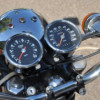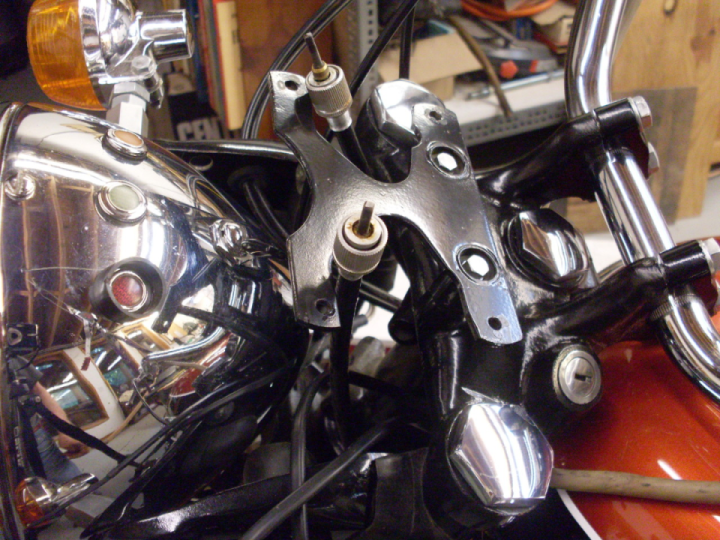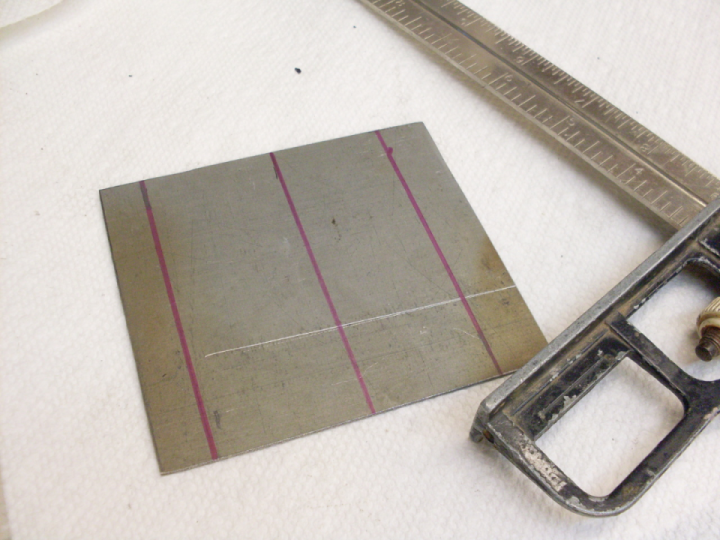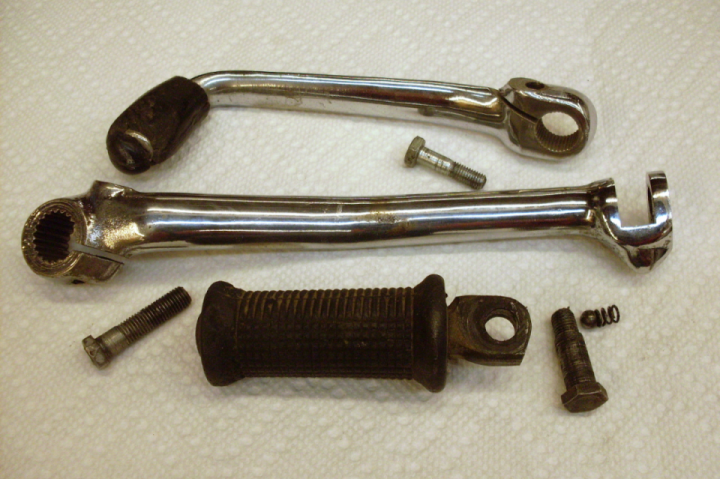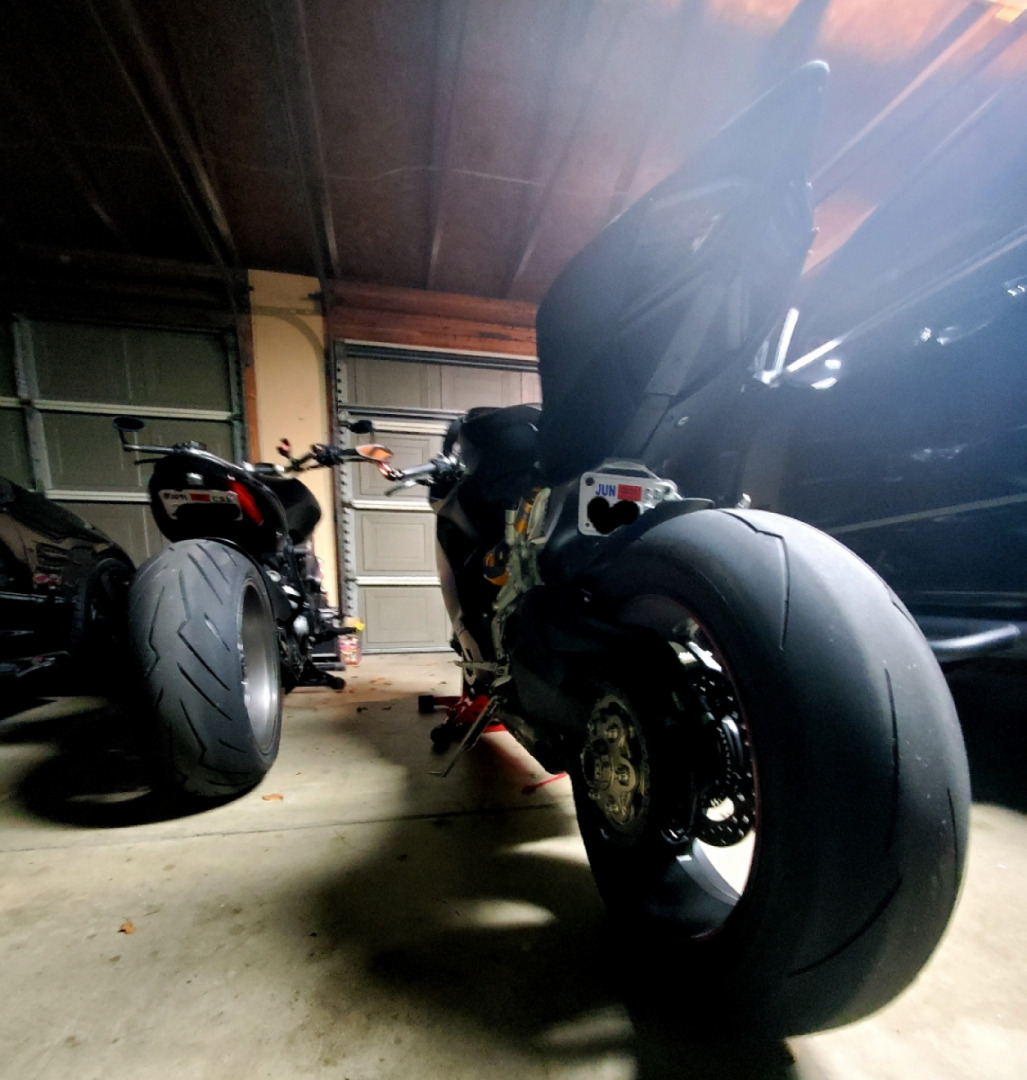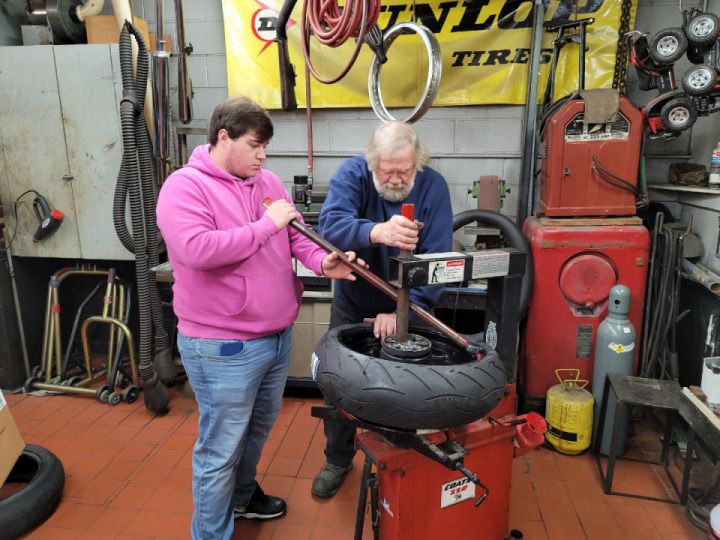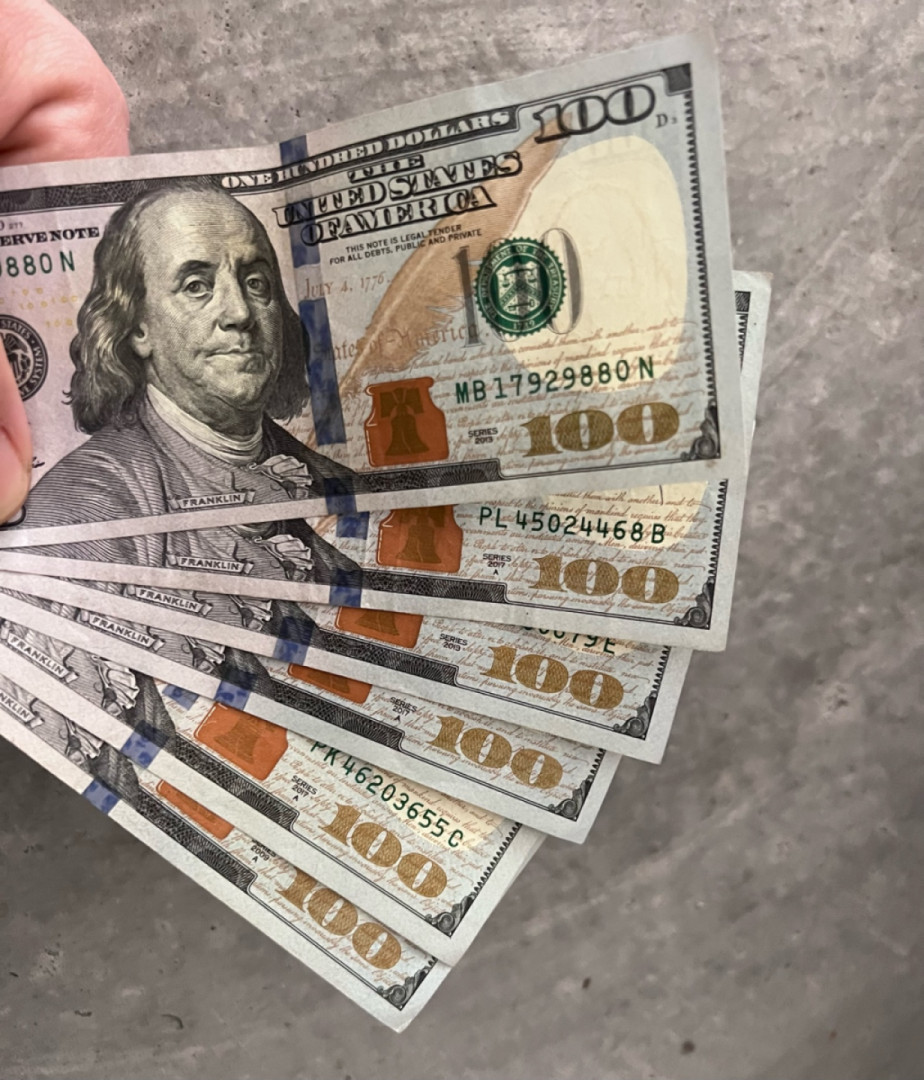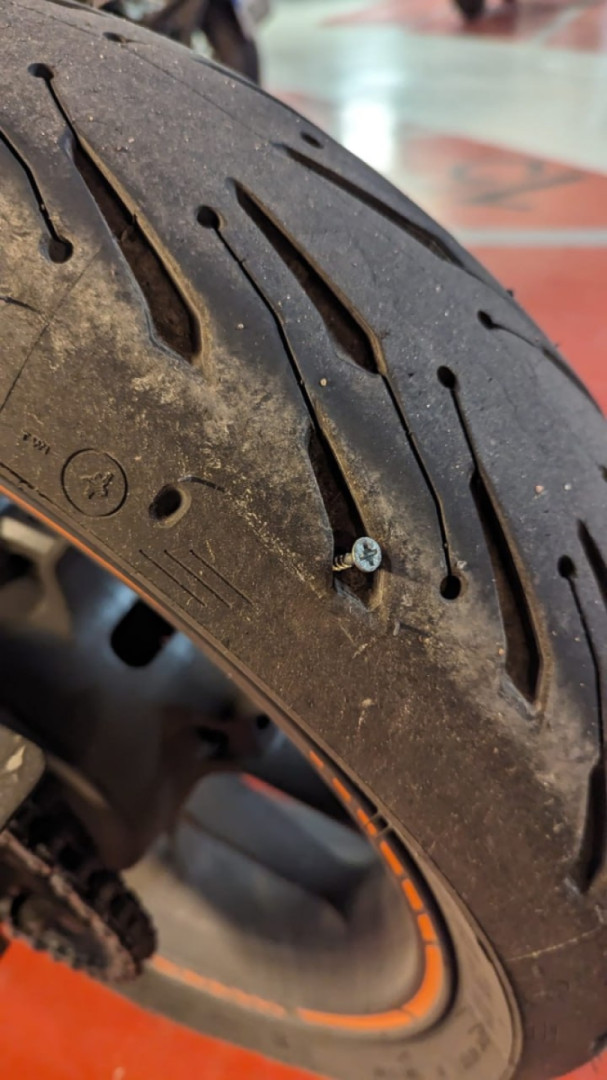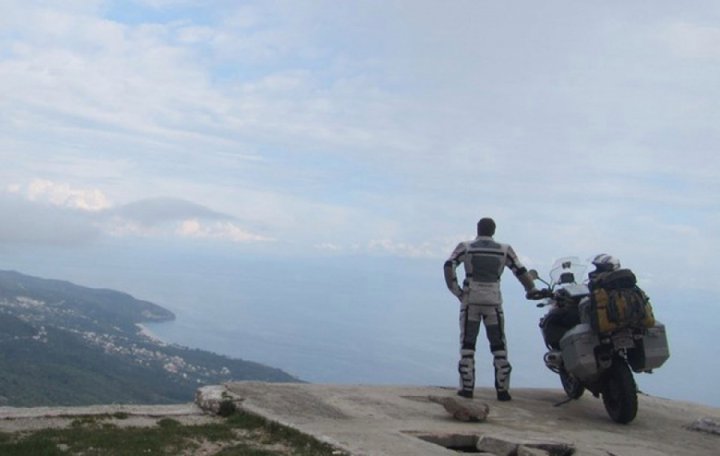Odds & Ends Pt. 3
Static Timing
In order to do final ignition timing with a timing light, the engine has to be running. To get it running, timing has to be close enough for the engine to start. That is the reason for static timing. This engine is speced to run with a maximum spark advance of 38 degrees before top dead center (38º BTDC). This means that with the centrifugal advance unit fully advanced, the points should open when the crank is at 38º BTDC. To determine when the crank is in exactly this position, there is a factory tool that screws into a threaded hole in the top of the crankcase behind the cylinders. The tool has a sliding probe that slips down into a recess in the crankshaft flywheel at exactly 38º BTDC. (There is also a recess at exactly TDC, but you can tell which is which by observing the position of the pistons or the alternator rotor.)
I made the factory tool from a common 1/2-13 bolt and a piece of 1/4" rod, but it turns out that on this engine, it's not really necesary. There is a mark cast into the alternator rotor and a pointer installed on the primary chaincase that align at 38º BTDC.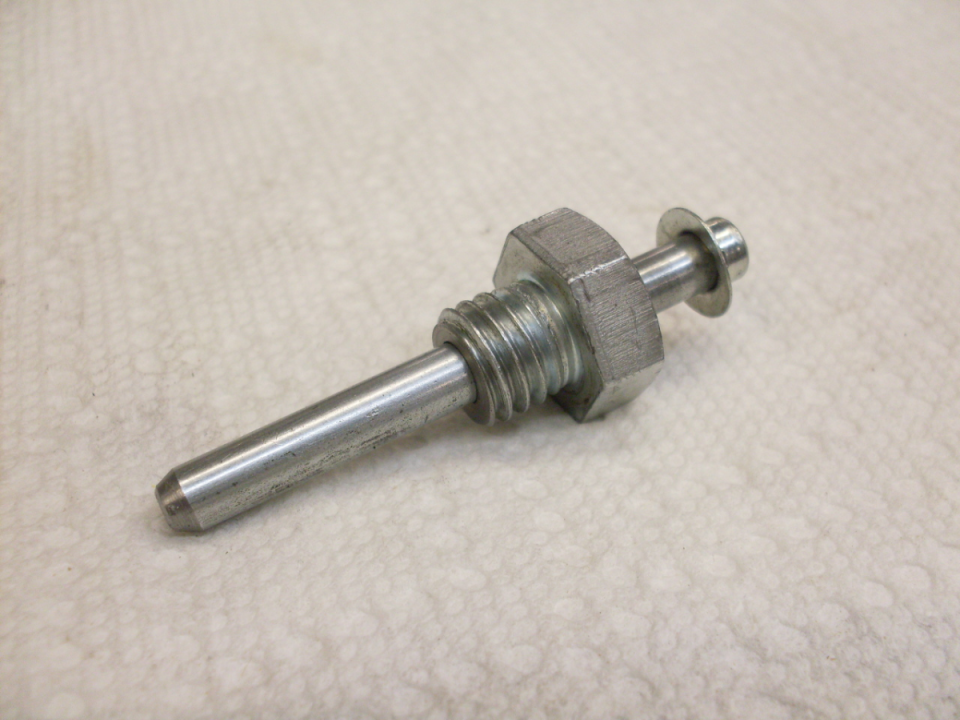
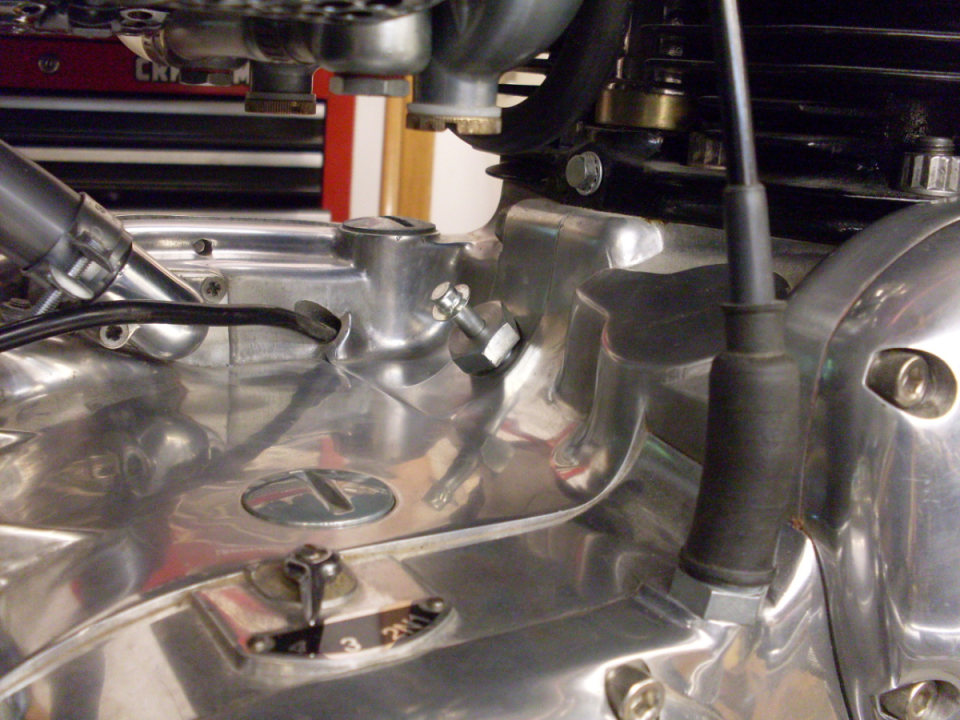
So with the crank at 38º BTDC, and the advance unit fully advanced, one of the sets of points should just be opening. This can be checked by using an ohmeter across the points, but I find it easier to use a little light wired to a battery, connected so that the light comes on when the points are closed. On this 6CA breaker assembly, each set of points can be adjusted independently, so the appropriate set is adjusted and tightened down. Then after one full rotation of the crank, the other set of points can be set.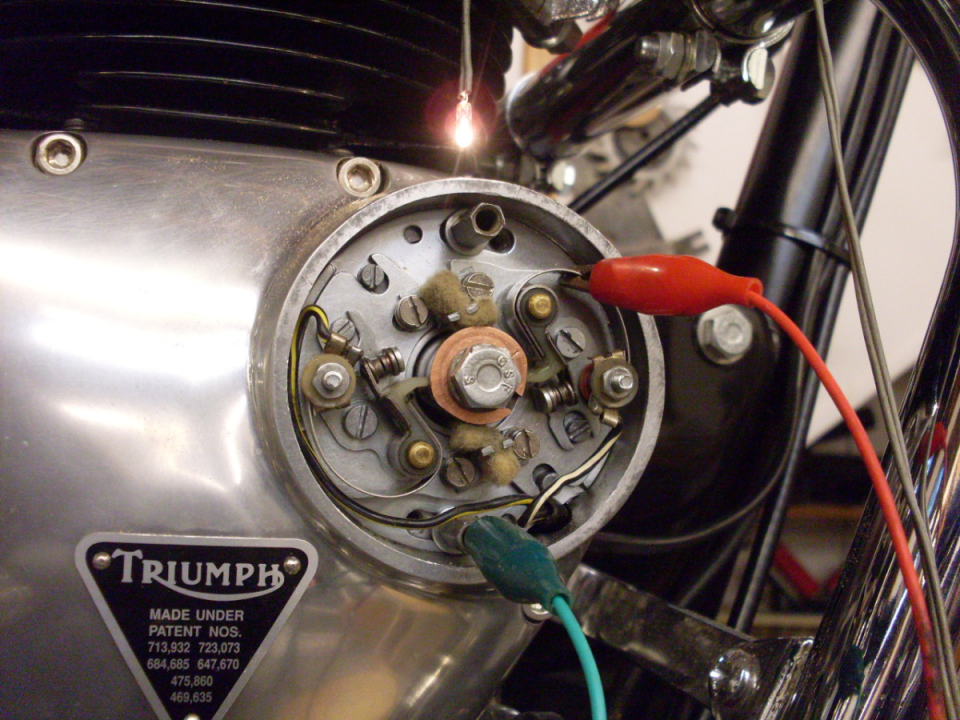
Assorted Caps, Covers, and Plugs
General cleanup, deburring from sloppy use of tools, replating, and new or newly annealed washers: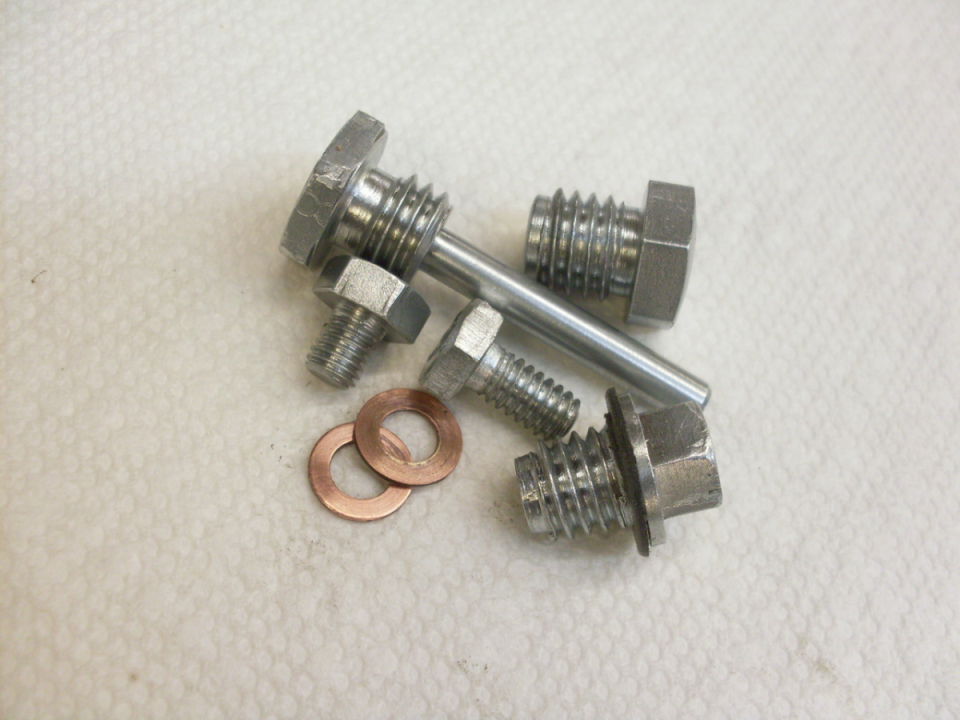
Think this sump cap can be saved?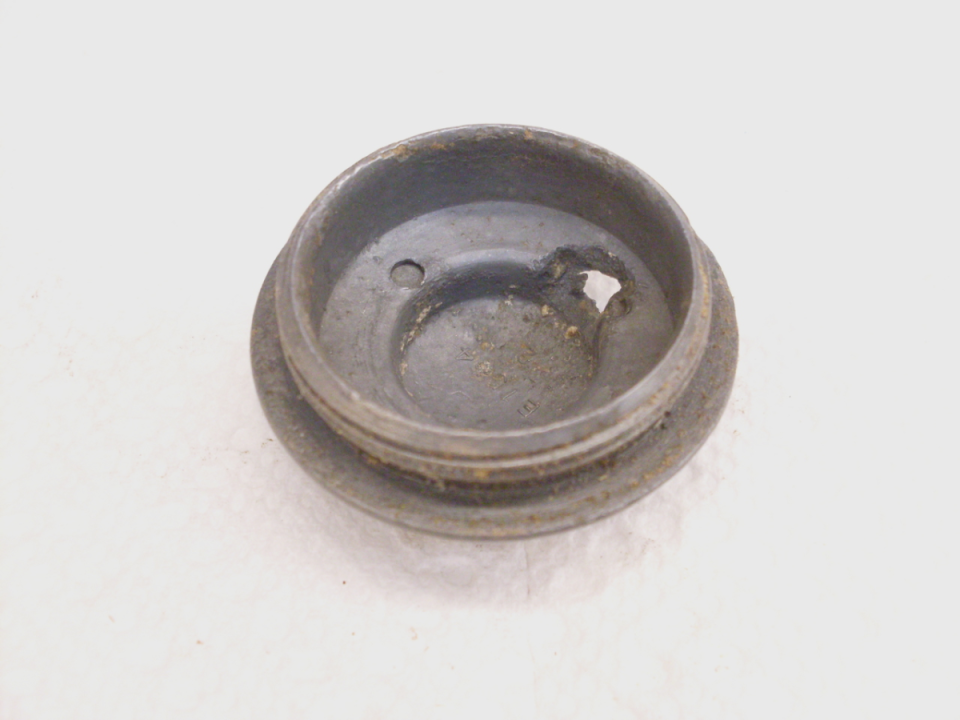
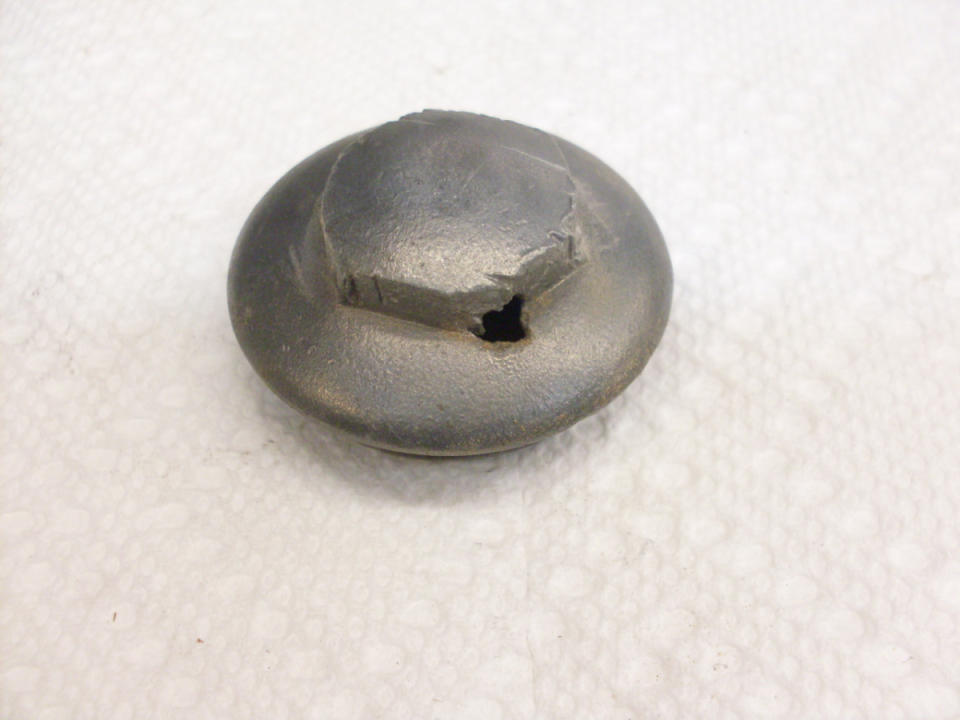
I decided not to try. Here are the parts of the sump, with a new cap. The screen is what Triumph calls a "filter". The O ring is interesting. The parts manual shows it going above the spring (which holds the "filter" down against the cap), next to the flange on the sump oil scavange tube. There is nothing to seal there, and I can see no earthly purpose for the O ring. A query on a couple of Triumph forums didn't turn up any explanation.
The rocker box plugs, which close the feeler gage holes on the rocker boxes. Those are copper "crush washers", which technically aren't supposed to be re-used. Many people do, though. These are probably original on the bike, so I did get new ones.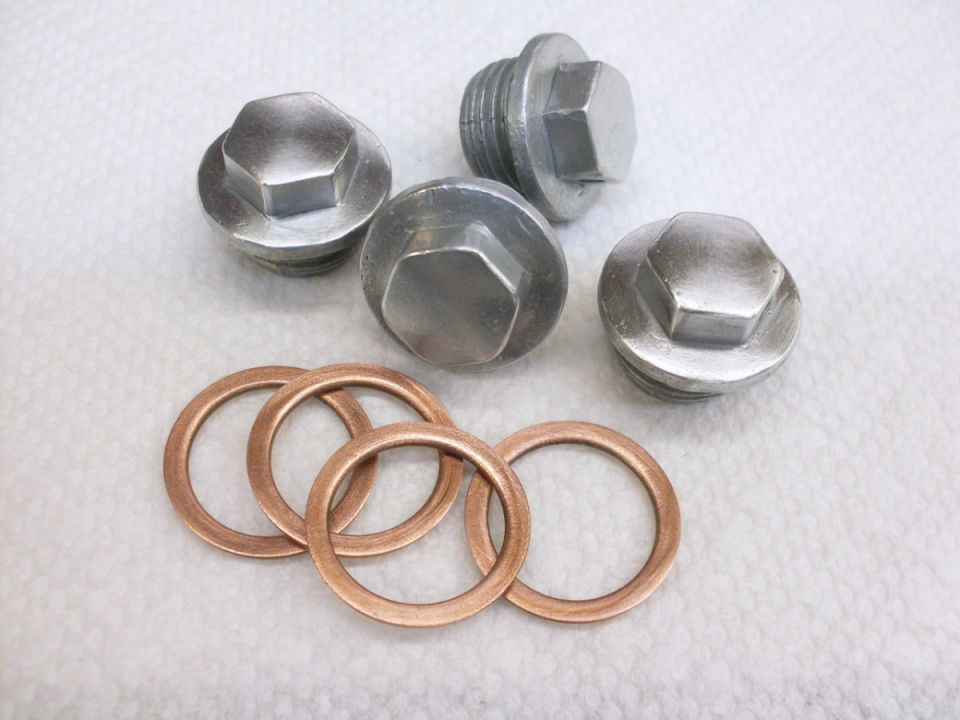
The rocker inspection caps are pretty visible items, so I spent a little tiome cleaning them up. The first pic shows the stages of cleanup and polishing. It's really only about ten minutes from one stage to the next. The second pic shows one of the caps brought back from a high polish to more of a satin finish. I like this better and will do them all this way. It's moot in a way, since the sheen doesn't last that long, especially with some tempterture cycles.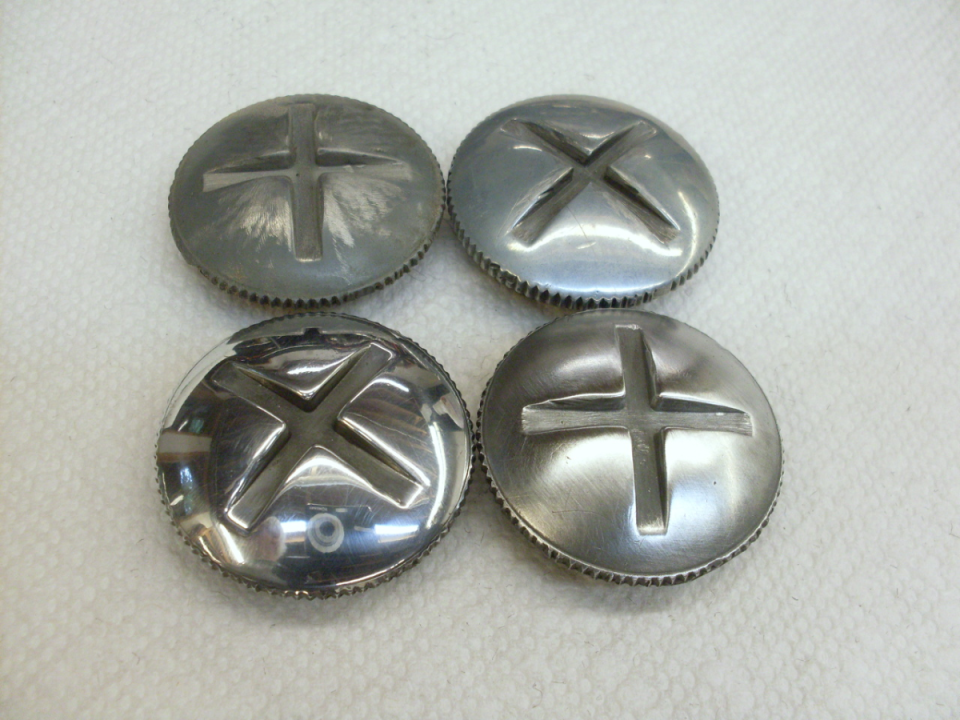
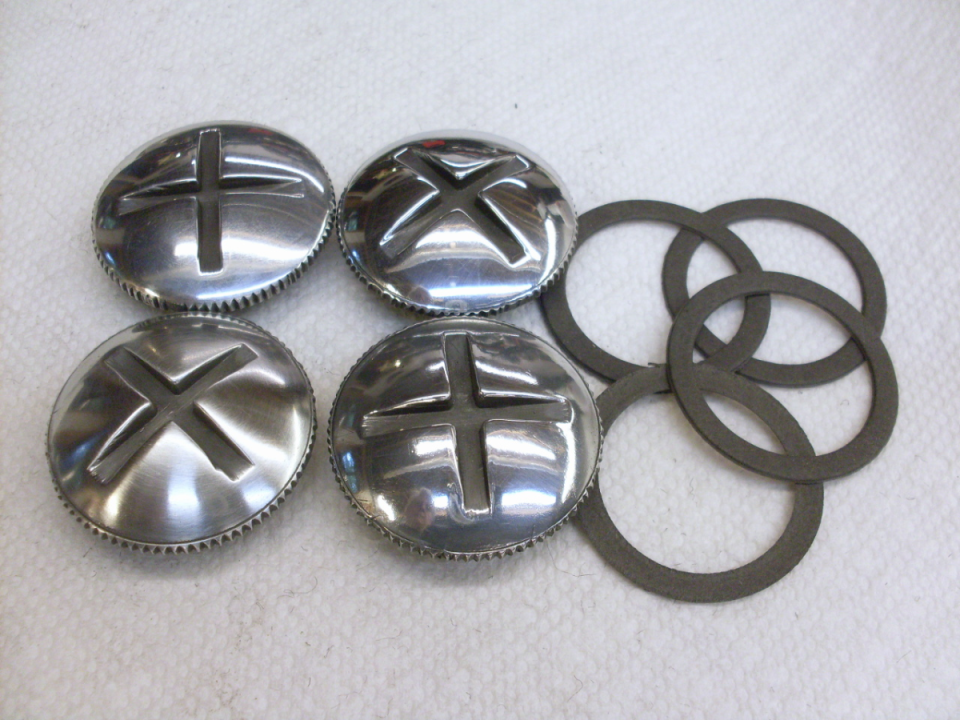
There are three of these covers onthe engine--the clutch adjustment cover, the gearbox filler, and the primary chain inspection cover.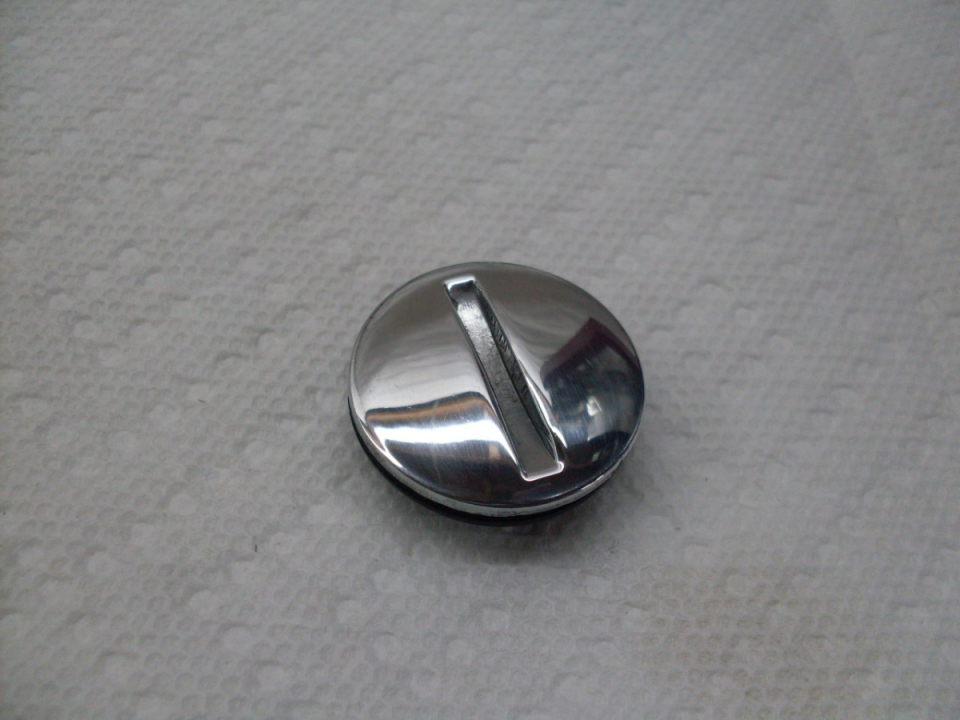
The rotor cover is a pretty visual part of the engine, and I try to take some pains on items with a logo. This shows the stages starting from the first pic where the cover has just been washed and cleaned with a little steel wool. This is an alloy which won't really take a high polish, which is fine with me. There is something going on with the screws for this part. The part number in the parts manual doesn't seem to be available anywhere, but they are apparently just 2BA oval head. I think they were chrome plated though, which means that tank badge screws should work OK.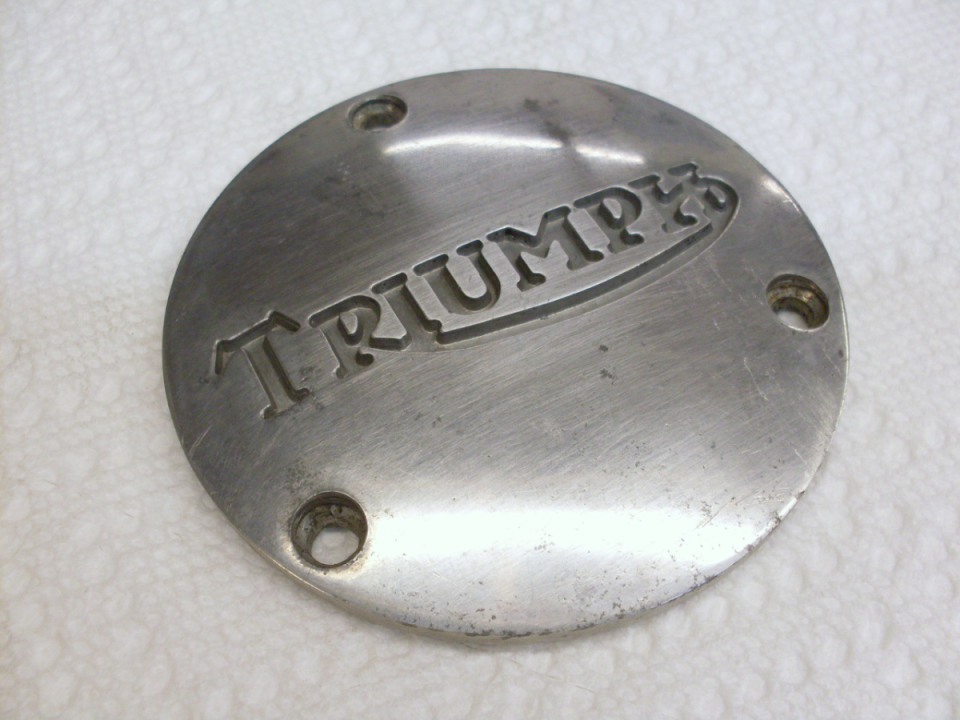
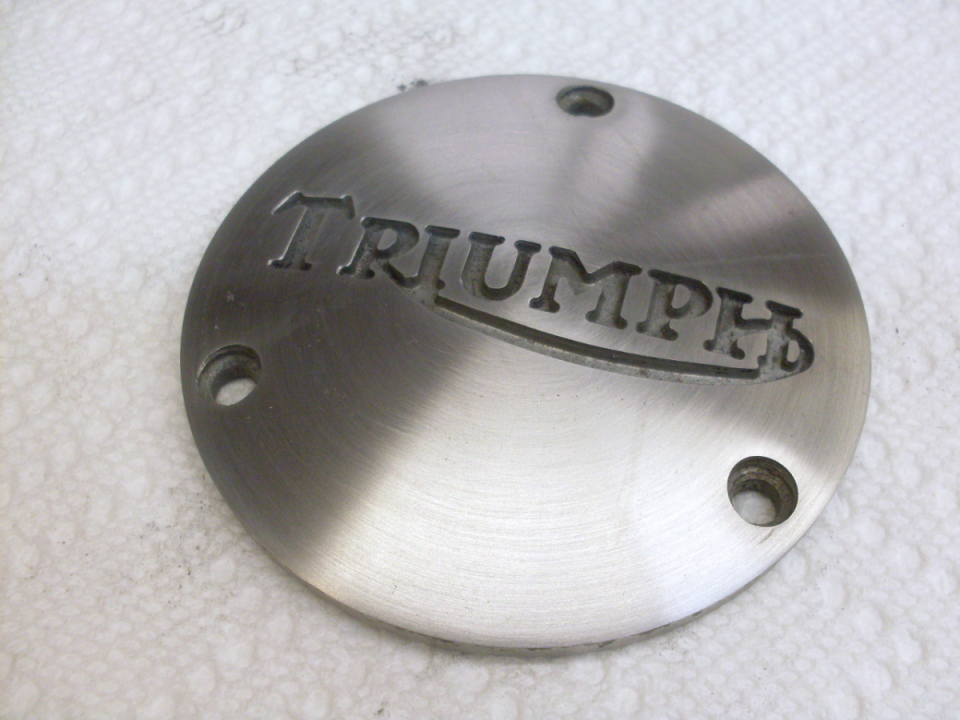
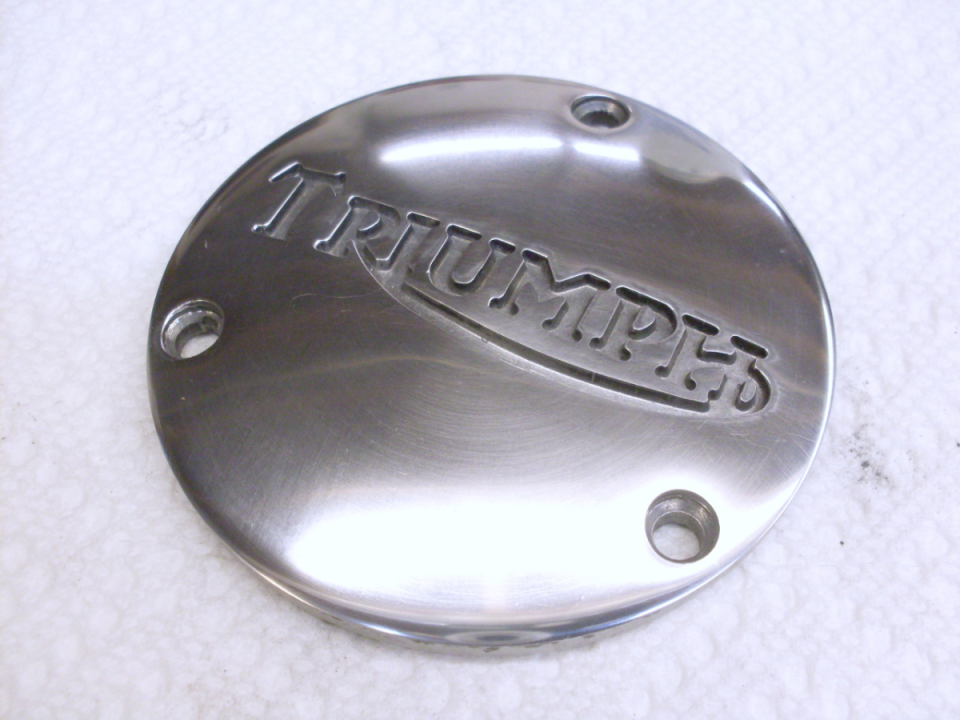
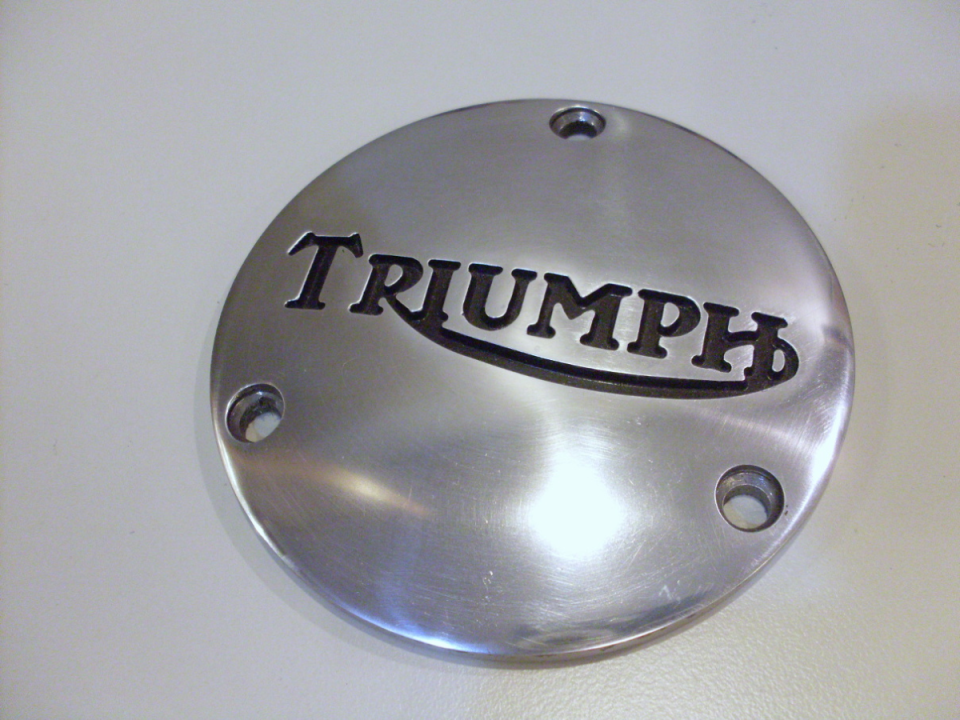
Getting really close to starting this puppy up. First there is the small problem of getting it up a few stairs and out of my basement.
 Follow
1.1K
Follow
1.1K




